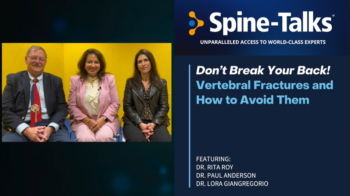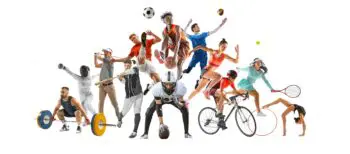I have three children who have participated in a variety of sports over the years and have also had the pleasure of coaching many teams of young athletes. I’ve seen first hand how competitive some children (and their parents) can be. I think it’s very important for our children that we stop and think about what we’re doing to them and consider the potential negative impacts on their health our demands may have on them. We have gone from an era when children played and cross-trained in multiple sports, to a time where children focus exclusively on a single sport with hyper-intense and highly repetitive training. The child’s goal – and often the parents’ – is to become an expert in that sport.
Professional athletes push the limits to create a competitive edge over their opponents. Intense focus is placed on their fitness, training, diet, sleep cycle, and psychological practices to improve performance. To gain an advantage, some athletes may resort to illegal measures like performance-enhancing drugs. However, for athletes who outperform the competition legally, concentrating on the above-mentioned aspects of their health and wellbeing is their main focus. Many professional athletes have “super-sized” their strength training, utilizing Navy Seal-style training or Olympic-style weight lifting, including heavy squatting, to try to gain an advantage. While this type of training may work well for some, for others such as professional golfer Tiger Woods, this aggressive style of training may ultimately lead to a shorter career.
The Trickledown Effect
Because professional athletes are pursuing hyper-intense training as a way to gain an edge, we now see college programs embracing the same behavior. High schools are mimicking the college level training and even further down the ladder, middle school athletes emulate the high school athletes; you get the pattern. They incorrectly conclude that if it works for professional athletes, then it should work for amateur athletes, too. But wait; there is a big difference between the bone health and strength of a professional athlete versus that of an adolescent athlete! The young athlete’s skeletal structure is not mature enough to handle this type of intense training. This is only further complicated by poor technique, overzealous trainers/coaches, or simply the competitiveness to outperform an opponent.
As a result of overtraining and improper weightlifting techniques, we are seeing an epidemic of low back stress fractures (spondylolysis) in adolescent athletes. The severity of this epidemic became blatantly obvious this past year when I received a phone call from a father in Iowa. His son, a 16 year old elite-level lacrosse player, had been unable to play lacrosse for the past six months due to a stress fracture. Upon discussing his son’s history, I discovered that the injury occurred during a heavy weight training session at the insistence of the coaches.
In that same week, I saw two other elite high school athletes who sustained the same type of fracture from squat training in the weight room with their teammates. Squatting and deadlifting have become the current strength training fad of professional and, consequently, adolescent athletes. Young athletes at the insistence of coaches and/or prodding of their peers are lifting too much weight with questionable technique and are seriously injuring themselves. The incidence of injuries has been rapidly escalating over the last few years and our practice in particular is now seeing dozens
of these types of injuries on a monthly basis.
Spondylolysis is a stress fracture through the portion of the vertebra that connects the front of the spine to the small joints in the back of the spine. It is a fracture through an area known as the pars interarticularis (a thin area of bone between the superior and inferior facets of each vertebral segment). Young athletes are particularly prone to fractures in this area since this is the thinnest area of the bone and these athletes are skeletally immature. Before the age of thirty, our bones progressively increase in density or get stronger; after thirty, our bones progressively lose density. This is why elderly people are prone to osteoporosis, a disease in which the density of bone is reduced.
When spondylolysis occurs, an individual frequently experiences pain in the back and potentially develops instability, leading to a cycle of worsening pain and more instability. Even if the athletes don’t sustain a fracture, they are developing many other injuries that can impact their ability to perform, their longevity in the sport, as well as the quality of their lives.
Prevention is Key
We do have some exciting news in that new therapies and technologies are helping patients treat spondylolysis. We have successfully injected stem cells, taken from the patient’s own pelvis, into these fracture sites to help them heal more effectively. The benefit of getting these fractures to heal through a therapeutic injection is that we can avoid chronic problems caused by the fracture not healing or the requirement for surgical intervention.
In the case of our adolescent athletes, prevention requires a more common sense approach to conditioning and training that is consistent with their skeletal maturity. Cross-training, adequate recovery or rest time, realistic time participating in the sport, and focusing on overall wellness go
a long way in preventing many injuries, including these fractures. One of our goals at the Spine Health Foundation is to help educate the public and providers as to appropriate treatment options as well as preventative techniques. As this epidemic of high school and middle school athletes’ injuries worsens, we need to refocus training and conditioning to produce healthy active adults rather than injured adolescent athletes.

by Dr. Thomas Schuler, Virginia Spine Institute
Listen to the podcast version here: [buzzsprout episode=’3467545′ player=’true’]




